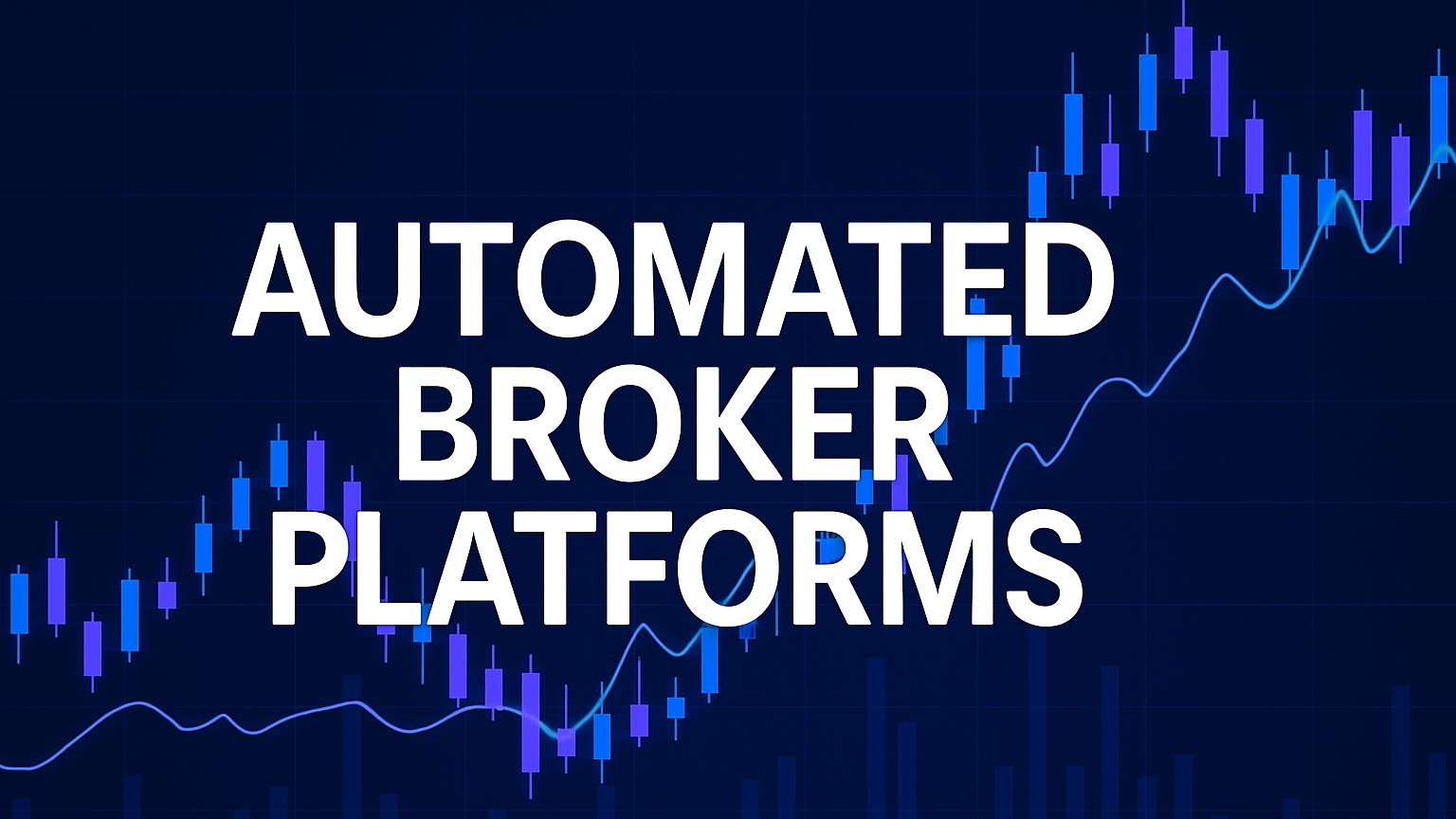Retail algo traders leverage modern tools and agility to compete with Wall Street, focusing on niche markets for profitable opportunities.
Retail algorithmic traders can compete with Wall Street by leveraging modern resources, focusing on niche markets, and capitalizing on their agility. Here's how retail traders stack up against institutional players:
-
Advantages of Retail Traders:
- Operate in smaller, less crowded markets.
- Use flexible, customizable strategies.
- Access modern, cloud-based resources such as QuantConnect, indicators from LuxAlgo, and Alpaca.
- Avoid legacy system constraints and red tape.
-
Challenges Retail Traders Face:
- Limited capital and market access.
- Higher costs for data and execution.
- Lack of institutional-grade resources like alternative data and prime brokerage services.
-
Wall Street's Strengths:
- Large-scale capital deployment.
- Access to exclusive data (e.g., satellite imagery, social sentiment).
- Advanced infrastructure for microsecond-level trade execution.
Quick Comparison
| Aspect | Retail Algo Traders | Wall Street Institutions |
|---|---|---|
| Capital | Personal funds, smaller trades | Large pools of capital |
| Market Impact | Minimal price influence | Significant market influence |
| Strategy Freedom | Highly flexible | Constrained by benchmarks |
| Technology | Modern, affordable platforms | Advanced but often legacy-bound |
| Risk Management | Tailored to individual needs | Standardized, complex frameworks |
Retail traders thrive in niche opportunities and leverage their flexibility to adapt quickly. While Wall Street dominates with scale and resources, retail algo traders can still carve out profitable opportunities by focusing on smaller markets and using cutting-edge tools.
Retail Traders vs Institutional Traders: Who Wins?
1. How Retail Algo Traders Operate
Retail algo trading shows how individual traders use modern resources to compete with Wall Street's massive capabilities. These traders rely on accessible platforms that make algorithmic trading approachable with intuitive interfaces.
Core Trading Infrastructure
Retail algo trading revolves around platforms like QuantConnect, which handles over $45 billion in notional volume every month. These platforms provide essential components for traders:
| Component | Purpose | Common Tools |
|---|---|---|
| Strategy Development | Building and testing trading algorithms | QuantConnect LEAN, LuxAlgo AI Backtesting Assistant |
| Market Data Access | Accessing real-time and historical price data | TradingView, MetaTrader |
| Execution Engine | Managing trade execution and order routing | Tradetron, QuantConnect |
| Risk Management | Controlling position sizes and limiting losses | Built-in platform tools |
This setup forms the backbone of retail algo trading, enabling traders to design and refine their strategies.
Strategy Development Process
Retail traders create algorithms using either coding or no-code solutions.
- Code-Based Development
A growing community of 357,000 traders contributes about 2,500 new algorithms monthly, equating to nearly one million lines of code. While this approach offers unparalleled flexibility, it requires programming skills. - No-Code Solutions
Platforms like Tradetron allow non-technical users to craft strategies with visual tools and pre-built components, lowering the barrier to entry.
Operational Challenges
- Limited access to prime brokerage services, which affects liquidity.
- Restrictions on margin and leverage compared to institutional traders.
- Higher costs for research tools and co-located servers.
"Potentially the most important disadvantage for the retail trader is lack of access to client news flow from their prime brokerage or credit-providing institution. Retail traders have to make use of non-traditional sources such as meet-up groups, blogs, forums, and open-access financial journals."
Performance Optimization
Retail traders rely on rigorous backtesting and constant updates to improve their strategies. These platforms stand out for their ease of use, diverse asset offerings, and extensive Python libraries. Automation eliminates emotional biases—an important factor when 62.9% to 76.4% of retail traders lose money trading manually. With algorithms executing trades in milliseconds, retail traders can achieve competitive speeds despite institutional advantages.
Resource Management
To counter institutional dominance, retail traders use cloud-based tools, community-driven research, and niche strategies. These methods help level the playing field and set the stage for comparing retail and institutional trading practices in the next section.
2. How Wall Street Runs Algo Trading

Wall Street's algorithmic trading showcases the powerful combination of advanced technology and financial resources that institutional traders rely on to dominate the markets.
Core Technology Advantages
| Component | Institutional Capability | Impact |
|---|---|---|
| Execution Speed | Trades in microseconds or less | Reacts to market changes instantly |
| Data Processing | Machine-learning-driven insights | Detects complex patterns in data |
| Market Access | Direct exchange connections | Reduces latency and costs |
Exclusive Data Sources
- Satellite imagery to gauge retail activity
- Social media sentiment analysis
- Supply chain tracking
- Consumer spending patterns
This gives institutions a head start on market trends, often acting on insights before they become public knowledge.
Operational Scale: Strengths and Limitations
Operating at scale allows institutions to influence market trends with large trades. However, this size also comes with challenges such as strict regulatory oversight and outdated systems.
How Their Strategies Differ
| Aspect | Institutional Approach | Impact on Performance |
|---|---|---|
| Capital Deployment | Large, benchmark-driven trades | Targets specific return goals |
| Risk Management | Multi-layered and complex | Tends to be more conservative |
| Market Focus | Broad market influence | Misses niche opportunities |
| Time Horizon | Long-term investments | Less adaptable to quick changes |
Challenges in Adopting New Tech
- Merging new tools with outdated systems
- Navigating restrictive IT policies
- Managing high infrastructure costs
- Competing for top technical talent
These challenges create openings for smaller, more agile retail traders to exploit inefficiencies in the market.
Strengths and Weaknesses
| Aspect | Retail Algo Traders | Wall Street Institutions |
|---|---|---|
| Market Agility | Quick to enter and exit smaller markets | Often limited by scale and regulations |
| Strategy Freedom | Free to develop unique, personalized strategies | Tend to rely on standardized approaches |
| Capital Deployment | Limited to personal funds | Access to much larger capital reserves |
| Technology Stack | Use modern, cloud-based platforms | Often rely on older, legacy systems |
| Risk Management | Tailored, customizable risk models | Governed by strict institutional rules |
| Market Access | Face higher trading costs | Benefit from direct exchange access |
Retail traders excel in smaller, less liquid markets where the sheer size of institutional funds becomes a disadvantage. As AlgoPro explains, "Retail traders are free to develop unique strategies unconfined to the herd mentality of larger funds chasing the same trends". This independence allows them to spot and take advantage of opportunities that bigger players might miss.
Institutions, on the other hand, have access to advanced proprietary systems and exclusive data. However, retail traders now benefit from modern, cloud-based resources like those offered by LuxAlgo, which include AI-powered backtesting—capabilities that were once the domain of large firms.
Regulation further separates these two groups. Institutional traders must comply with strict oversight and follow complex risk-management frameworks, which can slow decision-making. Retail traders, while free to design flexible risk models suited to their needs, take on greater personal responsibility for managing these risks.
When it comes to capital deployment, institutions focus on large, liquid markets due to their substantial resources. Retail traders, by contrast, can achieve impressive returns in niche markets where large funds often struggle to operate efficiently.
Tools That Help Retail Traders Compete
Modern technology is leveling the playing field for retail algo traders. It addresses challenges like outdated systems and high infrastructure costs, while giving traders tools to operate more efficiently and at lower costs.
QuantConnect is a standout platform with a community of over 357,000 quants, researchers, data scientists, and engineers. The platform handles more than $45 billion in notional volume every month. Its open-source LEAN engine offers a unified API for research, backtesting, and live trading.
"As a quantitative algorithmic hedge fund, we were seeking a platform that would enhance our ability to develop and backtest our trading strategies. After evaluating a range of solutions, we wholeheartedly endorse QuantConnect as the ideal platform for our needs."
- Chris O'Donnel, OAMQuant Co-Founder
LuxAlgo provides advanced tools for technical analysis, including:
| Feature | Capability | Benefit |
|---|---|---|
| AI Backtesting Assistant | Real-time strategy evaluation | High-level strategy performance |
| Price Action Concepts Toolkit | Automated pattern detection | Saves time on manual analysis |
| Signals & Overlays Toolkit | Multiple signal algorithms | Deep market insights |
| Custom Alert Creator | Personalized alerts | Better real-time monitoring |
Alpaca stands out with commission-free API trading and fast order execution. Between July and October 2024, Alpaca maintained 99.98% system uptime and achieved order processing times of just 1.5 milliseconds using their OMS v2 system. Their platform also includes real-time market data, margin trading, and a robust testing environment.
Key Features of These Platforms
- Data Quality and Access
Retail traders now have access to high-quality market data, including real-time quotes, historical data, and alternative data sources, all at affordable prices. - Strategy Development and Testing
These platforms offer advanced backtesting tools comparable to institutional systems."In order to be able to design a viable algorithm, a robust backtesting engine is crucial. After exploring various options, we found QuantConnect to be the most suitable for our needs. Its ease of use, wide range of instruments and asset classes, and an extensive Python library makes it an ideal choice."
- Risk Management Systems
Sophisticated tools allow traders to set custom risk parameters while maintaining professional-grade oversight.
The real edge for retail traders lies in their ability to select top-tier tools without being tied down by outdated systems or restrictive IT policies. This freedom allows them to build efficient trading setups at a fraction of the traditional cost.
Tips for Getting the Most Out of These Tools
- Test strategies in depth before using real money.
- Set up continuous monitoring systems for active oversight.
- Take advantage of free trials to evaluate different platforms.
When used effectively, these tools empower retail traders to compete with larger institutions while benefiting from the flexibility and agility that smaller operations can offer.
Conclusion
Institutional players make up nearly half of high-frequency equity trading in the United States. However, retail algorithmic traders have carved out profitable opportunities in areas that large funds often overlook.
- Market Selection and Strategy
By focusing on smaller, less crowded markets, retail traders can create strategies that deliver strong returns. - Technology and Tools
Modern resources now provide advanced trading tools at affordable prices. These capabilities, once exclusive to Wall Street, are now within reach for individual traders. - Agility
Retail traders can adjust strategies quickly without the red tape of large institutions. They prioritize absolute returns over benchmarks and design custom risk models tailored to their goals.
These strengths—strategic focus, advanced tools, and flexibility—enable retail traders to thrive in a competitive landscape.
While Wall Street still holds an edge in some areas, retail algo traders can establish profitable operations by carefully choosing markets, managing risks effectively, and utilizing modern trading technology. As AlgoPro puts it:
"The playing field of algorithmic trading might seem tilted towards hedge funds and institutional giants, but retail traders can succeed in profitable niches."








